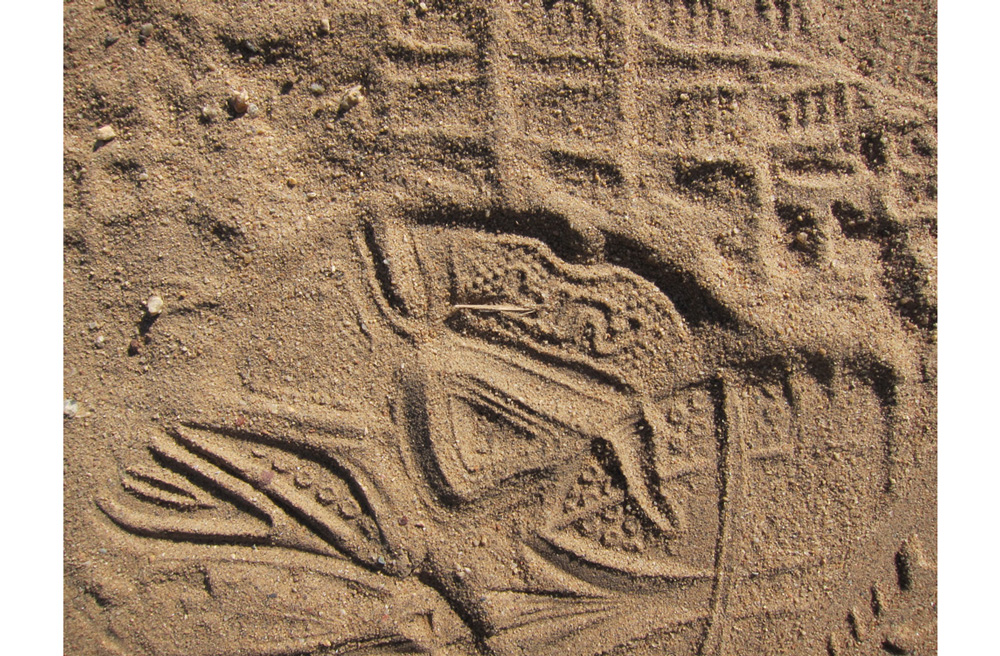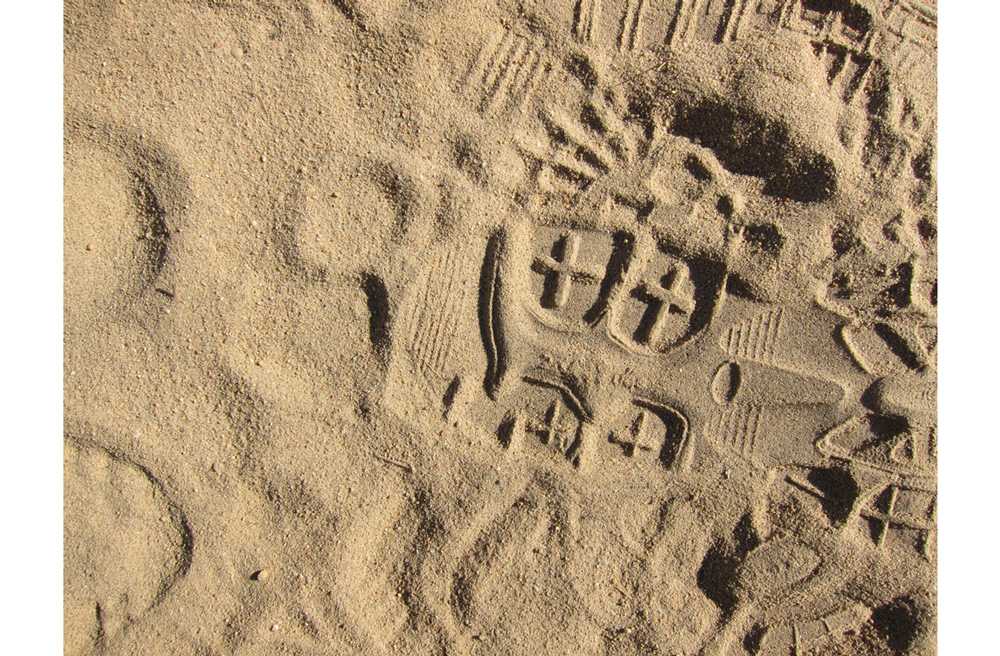TRACE
Inkjet print, model figures, plexiglass, 16" x 24" 2016
The trace project examines one of the most personal and immediate forms human geological impact - the footprint. The small scale geomorphologies of transient human footmarks are charged with irony - both insignificant within the vast timescales and physical magnitude of the earth's geohistory, and symbolic of the immense power of the human technosphere to rapidly reshape the geological landscape on unprecedented scales in the contemporary Anthropocene era.
SELECTED VIGNETTES: SHOEPRINT TRAIL GEOMORPHOLOGIES
A popular destination for tourists visiting Cassis and Parc National de Calanques in the south of France, the beach of Port Pin hosts a ever-changing array of near-surface landforms caused by anthrogenic footmarks. Changing levels of moisture in the sand give the impressions a distinctive fragmented appearance.
Steep slopes of unstable, windswept sand alternately capture and erase shoeprint pedoglyphs on the rippled contours of Mesquite Flat Sand Dunes, Death Valley National Park, California.
Muted footmarks and partial traces of tread geometries are characteristic the compacted, granular trail surfaces threading through Zabriskie Point in Death Valley National Park, California.
Mirroring the heavily eroded sandstone cliffs and gullies of the seaside landscape, dense foot traffic creates complex palimpsests of microscale ridges and valleys in the trail sediments of Torrey Pines State Natural Reserve, Del Mar, California.



First human footmark on the moon, Apollo 11 mission, 1969
A series of footmarks discovered in 2016 at a site in Laetoli, Tanzania are currently the earliest human fossil footprints known. 3.6 million years old, they have been linked to the human ancestral hominid Australopithecus afrensis.














